Systematic Investing
A System-driven Approach to Investing and Building Wealth
It's Time to Capture the Potential of Stocks Leveraging Quantitative Techniques
Like Hedge Funds Do ...
Our Quantitative System Develops Model Portfolios
With a Strong Track Record of Returns
Far Outpacing Benchmarks
The Editor's Desk
Dear Fellow Investor,
You have arrived at this page today for you're looking to discover a better way to invest and capture the potential that the stock market offers. A way which is more efficient, powerful, and consistent. Fortunes have been made through disciplined investing. And there's no reason why we can't do that as well. My name is Tarun Chandra and let me explain more about quantitative investing, our system, and its track record. That's the only way to empower you to make a decision if this system is one that can get you closer towards achieving your desired investing goals by setting you on a path of building investment wealth over time.
Sincerely,
Tarun Chandra
Graycell Advisors
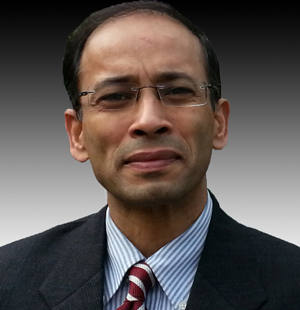
Quantitative Model Investing
A system-driven unemotional approach
embraced by some of the best hedge funds
"If you do fundamental trading, one morning you come in and feel like a genius, your positions are all your way… then the next day they’ve gone against you and you feel like an idiot… so in 1988 I decided it’s going to be 100% models, and it has been ever since... and it turned out to be a great business."
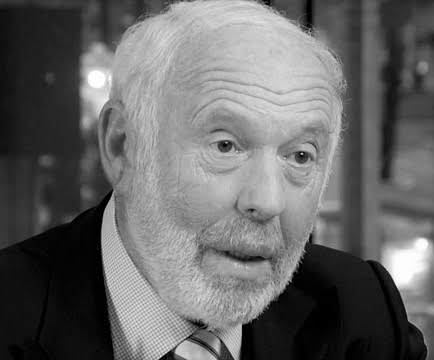
Jim Simons
Mathematician, Founder of Renaissance Technologies hedge fund
Jim Simons is a legendary hedge fund manager, and his Renaissance Technologies hedge fund has one of the best, if not the best, performance track record on Wall Street even while charging the highest fees - over 40% of profits. His personal fortune is estimated by Forbes to be above $15 billion. Renaissance is a 100% quantitative-driven shop, which means it uses systematic investing incorporating rules-based algorithms and models to achieve their returns. Unfortunately, they don't invest for individuals. In fact, in its top performing Medallion Fund, the firm returned all the outside money in 2005 and only invests the money of in-house employees. Let us understand why systematic model-driven investing has become such a powerful strategy which continues to drive multi-billion dollar active management funds, like those of Ray Dalio's Bridgewater Associates, the largest hedge fund, and Steve Cohen's Point 72, to shift towards quantitative model investing.
One of my academic areas of specialization was Systems Analysis and Design. It takes time to design a system since based on the function there can be many possibilities to consider and address. But the elegance of a system is that once it has been developed it usually performs consistently based on the parameters or rules that have been assigned, although some optimization may be required to adapt to evolving market conditions. Since a great deal of analysis and experience goes into designing a system and testing it under various situations, one has to develop sufficient confidence to trust it. The discipline to follow the system diligently is a prerequisite to achieving the objective for which the system was designed in the first place. Most failures occur due to lack of this discipline. Extensive research has been conducted on the efficacy of systematic decision-making compared to expert or discretionary decisions. Empirical evidence has come out consistently in favor of model-driven decision-making, and this is relevant for investing as well.
Paul Meehl, an American psychologist who is considered the founding father of the science of the predictive importance of quantitative models over human judgment, studied the outcomes of predictions in many different settings. He discovered a preponderance of the evidence that predictions based on mechanical [algorithmic, quantitative] methods of data combination outperformed clinical [subjective, informal, in-the-head] methods based on expert judgment. Decades ago in his seminal work, Clinical Versus Statistical Prediction: A Theoretical Analysis and a Review of the Evidence, Meehl noted on the efficacy of the quantitative models, saying:
"There is no controversy in social science that shows such a large body of qualitatively diverse studies coming out so uniformly in the same direction as this one … predicting everything from outcomes of football games to diagnosis of liver disease."

Paul Meehl
Psychologist
In a 2000 paper by William Grove, et al, titled ‘Clinical versus Mechanical Predictions,’ the authors noted,
Superiority for mechanical-prediction techniques was consistent [over humans/experts], regardless of the judgment task, type of judges [experts], judges' amounts of experience, or the types of data being combined.”

Grove, William; Zald, David; Lebow, Boyd; et al
Psychological Assessment, Mar 2000
Why does systematic decision making, using even uncomplicated quant models, come out ahead of expert opinions, which are nothing else but discretionary decisions made by experts?
The answer lies within us. Our emotional makeup or behavioral tendencies which are embedded in our thinking.
Research reveals the human mind is very capable of consistently misjudging the world.
We are prone to over-or-under-estimating, being overconfident in our analysis while doubting data contrary to our opinions, and using perceptions to create or fill-up what doesn't exist. It's easier to operate that way. Psychologically, our opinions are filtered through our natural biases.
It is not always a bad thing. For example, in everyday mundane decisions or when it's a question of survival and elaborate time-consuming analysis is counter-productive. But the biases create a tougher situation when decisions involve investing, money, time constraints, and emotion.
"All these psychological tendencies work largely or entirely on a subconscious level, which makes them very insidious...Wherever you turn, consistency and commitment tendency [and cognitive biases] are affecting you."
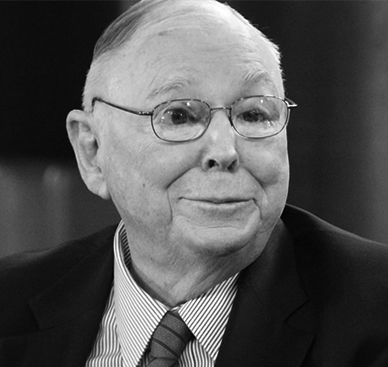
Charlie Munger
Vice Chairman of Berkshire Hathaway, Warren Buffett's investment partner
Charlie Munger, Vice-Chairman of Berkshire Hathway and long-term investment partner of Warren Buffett, refers to this cauldron of emotions, biases, and tendencies acting in concert to push us towards an irrational action as the "Lollapalooza effect." In his book, Poor Charlie's Almanack, Munger notes several cognitive biases that we should be aware of to make better investment and business decisions.
Many of us may have already witnessed these irrational tendencies in our investments.
Most of the time the “gut-feel” investing decision eventually leaves one poorer and feeling exhausted, disappointed, stressed, and frustrated.
I know these feelings for I too have experienced them.
Computer algorithms simply don't feel that way.
A legitimate question is why do experts perform poorly even when they’re given the model’s output before making their decisions?
Once again it’s our propensity to overestimate our abilities, and the feeling that we possess special insight that can allow us to enhance the model’s decision.
So the experts when given the same model's output end up modifying it and making the results poorer. Something as mundane as a rough commute or a missed train can affect the way we perceive things. Furthermore, the decision-making can be inconsistent from person-to-person even when they look at the same data. All these factors significantly diminish our ability to bring the perceived “enhanced” performance compared to that of a system's emotionless and model-driven decision making.
"Unrealistic optimism is a pervasive feature of human life; it characterizes most people in most social categories. When they overestimate their personal immunity from harm, people may fail to take sensible preventive steps."
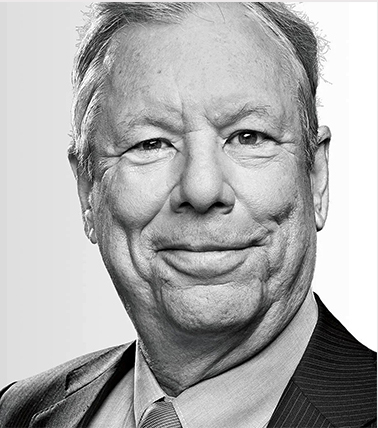
Richard Thaler
Nobel Prize Winner, Behavioral Economist, and Author
In October 2017, Richard Thaler, a behavioral economist from the University of Chicago, won the Nobel Prize for his work in exploring the biases that affect how people absorb information and arrive at decisions. In other words, how people are not rational as is often assumed in econometric models, but instead have mental quirks or biases, limited self-control and rationality, and social preferences that lead them towards irrational behavior, and shape market outcomes.
Thaler is not the first person to receive the coveted Nobel Prize for work in the field of behavioral impact on decision-making. Other Nobel Prize winners who have contributed to this field include psychologist Daniel Kahneman and economist Vernon Smith in 2002, and economist Robert Shiller in 2013.
Drawing on decades of research in psychology that resulted in a Nobel Prize in Economic Sciences, Daniel Kahneman, who was inspired by Meehl’s work, notes in his book, Thinking, Fast and Slow:
"Several studies have shown that human decision makers are inferior to a prediction formula even when they are given the score suggested by the formula! They feel that they can overrule the formula [model] because they have additional information about the case, but they are wrong more often than not."
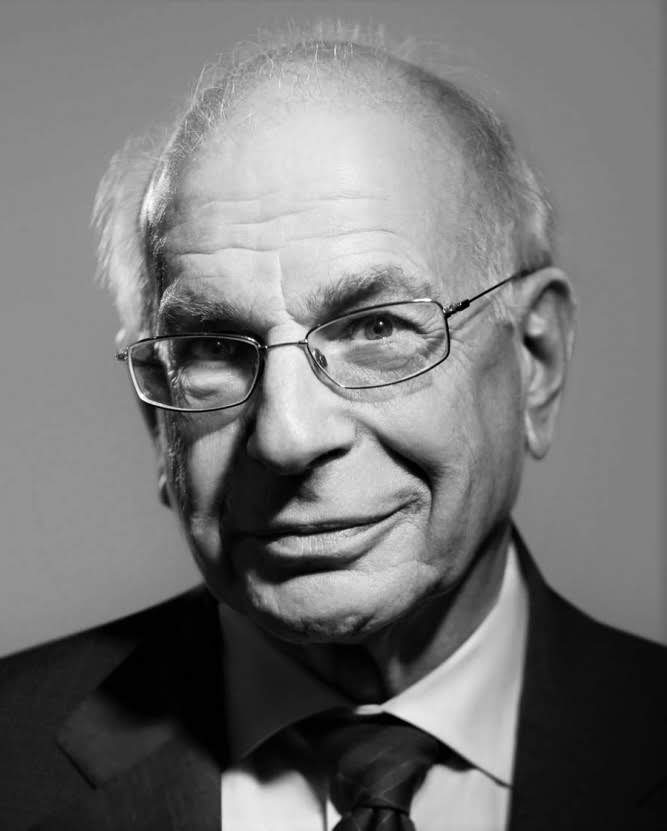
Daniel Kahneman
Nobel Prize Winner and author of book Thinking, Fast and Slow
What the studies and empirical evidence above tell us is something probably you have already observed or experienced.
How many times have you encountered analysts and economists making wrong calls?
It happens all the time.
If these professionals who have access to all kinds of data, analysis tools, and support teams continue to be frequently wrong in their predictions, then it’s a fairly tall order to expect an individual investor to be consistently right making judgment calls. We used to often say on Wall Street that economists are usually right when they offer a forecast but no time frame, and never right when they offer both.
The bottom line is that if you’re going to invest using system-driven, quantitative models, just don’t keep enhancing the model's output with your judgment calls. You may be thinking of pushing the performance ceiling higher, but studies of experts strongly suggest that the performance ceiling is being lowered.
Trust Jim Simons to know something about quantitative model investing when he noted,
"...if you’re going to trade using models, just slavishly use the models. You do whatever the hell it says no matter how you feel about it in the moment."

Jim Simons
Mathematician, Founder of Renaissance Technologies hedge fund
My Journey to Quantitative Modeling ...
I started working on Wall Street in the early nineties as an Analyst.
I first worked as a Buyside Analyst (for an asset management firm), and thereafter as a Sellside Analyst (for broker-dealer investment banks). Over the years, the coverage included companies in various sectors including Software, Telcos, Semiconductors, IT Services, Medical Devices, Pharmaceuticals, etc. The focus was mostly on US smallcap and midcap stocks.
Things were going well when the first blow-up happened. A software company that missed its numbers. Out-of-the-blue, Microsoft incorporated some of this company’s key product features into their next release of Windows, and this company was busted. A hard lesson learned. I was perhaps too close watching the trees and overlooked the forest.
There is a saying in research departments on Wall Street that if you haven’t had an earnings miss yet, then you haven’t been an Analyst long enough. In fact, at Goldman Sachs, a helmet used to be passed around in the Research department to the Analysts who suffered a blow-up. The idea was to hit the helmet with a hammer every time a blow-up occurred. As you can guess, this helmet was quite battered.
I got better at picking stocks but also had my stumbles. Some of them were unavoidable, but there were others where I hung on to an opinion too long or looked at things differently or misinterpreted data, consequently over-or-under-estimating or reposed too much faith in management guidance. And I was not alone. Research departments at most firms have similar stories. Analysts and strategists who have scaled greater heights were also riding the same cycles of success and failure. Consistency was elusive.
It ain't what you don't know that gets you into trouble. It's what you know for sure that just ain't so.

Mark Twain
American writer and humorist (attributed but unverified quote)
As I saw it, consistency was sought hard, but hardly achieved. Even the best succumbed to the human reversion to mean or average performance over time.
Remember, Elaine Garzarelli making a 1987 prescient call for an impending market crash. Or Goldman Sachs market strategist Abby Joseph Cohen from the nineties calling the bull market. Or Meredith Whitney from Oppenheimer in the late 2000s calling for a Citigroup dividend cut, which happened, and then a municipal bonds sector debacle, which never did. All of them had their flashes of brilliance, but could not maintain consistency. The list of people goes on-and-on with notables – from market strategists to economists to analysts to portfolio managers - and not so notables, like me.
Even if you haven’t heard of experts getting it wrong, just check out a company that missed earnings today or the list of stocks that declined sharply. You’ll discover the stock has cratered, and there are now plentiful revisions of price and rating after the meltdown. If super-sharp analysts and asset managers with all the resources at their disposal and a 24/7 focus have found it hard to make prescient calls consistently, then what are the chances for an individual investor to get it right.
The majority of times the ‘Sell’ rating change is forced on to the Analysts and experts, and it is forced post-eventum.
Heck, anyone can do that.
Eventually, after the debacle, quarters or a year later even if your conviction is finally proven right, do you possess the resources to weather a substantial decline. Even institutions with deep pockets find it hard.
How many such deep portfolio drawdowns can you weather?
The most difficult subjects can be explained to the most slow-witted man if he has not formed any idea of them already; but the simplest thing cannot be made clear to the most intelligent man if he is firmly persuaded that he knows already, without a shadow of doubt, what is laid before him.

Leo Tolstoy
Russian writer regarded as one of the greatest of all time
I left Wall Street, bitten by an entrepreneurial bug, and joined one of our investment banking clients.
But the love for Wall Street never left me. Right from the first bust-up when I had started out, I continued to search for ways to create greater predictability in my research; to diminish the unexpected; to read signs of trouble; to survive an earnings season with more accurate forecasts.
Very early on, I developed a penchant for analyzing market data in various tools to create models that assist in building an idea funnel. This was the Systems Analyst side of me. I did it with Professors as their graduate assistant, modeling econometric series with the idea of predicting short-term interest rates and the timing of Federal Reserve's next move. I brought that mindset to my Wall Street job as well. I was looking for certain tendencies for stocks that perform well. But at the same time, I was also growing my confidence in the various systems I tried. I didn't wish to rely much on human interaction to determine investment outcomes.
Once I winded out of the Wall Street and Main Street roles, I decided to continue developing model portfolios focusing on the Small Caps, Large Caps, S&P 500 stocks, ETFs, etc. I created portfolios with the intent to outperform benchmark indexes. I found the results of my model-driven quantitative portfolios consistently and materially outperforming the benchmarks. I started offering subscribers these model portfolios. That’s what I have been doing since - using quantitative analysis to develop model portfolios with the objective of outperforming benchmarks and managing risk.
I’ve made many mistakes as an analyst and investor, many of them cited here, and I’ve tried to learn from them.
Through the years, one thing has become clearer to me.
Consistently outperforming the market, year-in, and year-out is very hard to achieve for individual investors without the discipline of rules-based systematic investing.
There are rare smart folks who achieve consistent performance by creating their own investing system and pursuing it with discipline. But many investors are smart and still not consistently successful. Neither as individual investors do we have access to exceptional money managers with excellent investing temperament who are focused on managing billion-dollar portfolios of institutional and high net worth money.
Success in investing doesn’t correlate to IQ. Once you’ve ordinary intelligence, what you need is the temperament to control the urges that get other people into trouble in investing.

Warren Buffett
Legendary Investor
Consistent returns require discipline and rules-based investing, unclouded by impulsive judgments.
Many individual investors dream and aim for doubles-and-triples when they invest. They may occasionally even get them. But often an investor will find that the gains are being offset to a significant extent by many other positions which are closed for losses or are being held perennially hoping for a rebound.
Model-driven investing guides you to capture whatever returns the market can reasonably offer, and to outperform that level.
The rules-based systematic investing helps you get to the next-down or the next-base. And that’s how the portfolio returns accumulate. Incrementally you patiently accumulate your downs to get to the endzone or collect your bases to complete a run. That’s how you get to your double/triple in model investing. Even if the doubles don’t happen, you still want to collect a solid portfolio return that year, relative to benchmarks, and build on it in the years ahead. But when an investor embeds the idea in the mind for a double or triple on an individual position, it is inevitable for emotions to eventually cloud the judgment and solder an investor to that position. It’s hard to let go. A terrible thing is to not let go and take a round trip or perhaps even worse. Such a situation takes a lot out of you. A seasoned investor knows very well the market's ability to negatively surprise many times – remember the sharp price declines that occur daily.
Think of your portfolio, and the positions therein, as a vehicle or a bus to move you forward – to the next stop, or even further.
But be prepared to get off if the situation warrants. For there is another bus coming behind. When I started off as an Analyst and used to show annoyance at missing an idea, the Director of Research used to tell me:
Stock ideas are like the New York subway. There is one every few minutes.

Director of Research
New York Investment Bank
The message the Wall Street veteran was trying to communicate was that opportunities are plentiful and never cease.
Emotionless investing is a critical prerequisite for successful investment outcomes, and model-driven investing provides the discipline to invest without emotions. Just like hedge funds benefit from their quantitative investing strategies, I believe we also can grow our investment portfolio through the discipline of systematic model investing and enhance the probability of achieving consistently superior returns over benchmarks.
I have provided you with my experience and empirical evidence from studies to support the argument for quantitative model investing. I’m not asking you to believe me. Do your own research. But you must not ignore the consistent successes achieved by model investing driven funds run by stalwarts like Jim Simons and Ray Dalio.
Investors only diminish the potential of their investment portfolios by not considering systematic investing strategies seriously.
How Systematic Investing Works?
The Graycell portfolios use quantitative models to guide the stock selection.
The algorithms, which are instructions or rules in a computer-driven quantitative model, are used to create the monthly model portfolios. Each month the investment model reviews the stocks to search, analyze, and offer ideas for the strategy being pursued - biotechs, healthcare, smallcap, etc. At the beginning of the month the portfolio is adjusted to the extent required. This allows for weaker stocks to be closed out, replacing them with stronger ones. By performing this rotation to the extent necessary, the investment model positions the portfolio to hold a promising group of stocks - those which the system determines to have a strong potential of delivering benchmark-beating returns.
Based on the focus of the model portfolio, there may be exposure to a single sector instead of a broader set of industries, which creates concentrated sector risk and higher volatility. Besides, the model portfolios have a limit on the total number of positions, which can create higher volatility when compared to benchmarks holding hundreds of stocks like the S&P 500 or the Nasdaq Biotech Index. However, the concentration in the model portfolios has its benefits, as well-performing positions can have a stronger impact on the portfolio when compared to a broadly diversified one.
As will be observed from the results, the model portfolios have materially outperformed over longer, medium and even a shorter time frame of a year. The methodology has allowed Graycell model portfolios to historically deliver market-beating performance, although past results are not indicative of future performance.
What The Systematic Investing Service Is Not...
Let us be clear about what the model-driven systematic investing service is not. It is not a get-rich-quick scheme or an investing panacea.
We are deliberate and long-term. You must have at least a 2-3 year time horizon to benefit from a systematic portfolio.
Investors cannot avoid individual stock losses since they are part of the stock investing landscape. But the losses can be managed with a portfolio approach.
As investors, we must recognize that the most important thing is to have reasonable and realistic expectations from the stock market, which is a risk-reward market and not a risk-free market. There is a 10% annual return expectation over the long-term from the stock market. There are years when the market climbs 20% or higher, particularly after a bear market, but such years are less frequent. In addition, bear markets or corrections can take away 10% to 30%, and sometimes more, from an index.
Keeping all this in perspective, we are guided by the objective to meaningfully outperform the benchmarks and aim to be consistent.
This is how a portfolio is built over the years and creates investment wealth.
The Future is About Hope!
The Market is About Results, Not Hope
Many investors get caught up in hope investing.
Quantitatively-driven model portfolios do not rely on hope.
They just deal with the data as it exists and interprets. No hoping or swearing.
You hold the positions or you fold them just as the data guides.
That’s what prudent investing requires. A controlled emotional state of decision-making. Our mind feeds on emotions. Over the long-run, emotions and biases can disrupt investment performance. Recall the under-performance of experts who couldn’t outperform systems even after possessing the recommended output of the systems.
Emotions and biases are the variables that are always present in the experts, and absent in a system.
It is hard to take losses. But the performance history bears out that the methodology works. Operating within a rules-based system increases the probability of avoiding deep and total losses, and enhancing returns.
The focus has to be on portfolio return and not on individual stock returns.
It’s great to be a person of conviction. But sticking to your guns stubbornly may have a real downside when it comes to investing for markets can be irrational.
You may be right in the end.
But will you be there in the end?
As noted British economist and an active investor, John Maynard Keynes so very eloquently noted,
The market can stay irrational longer than you can stay solvent.

John Maynard Keynes
Economist
A Model-Driven Systematic Investing Healthcare Portfolio
That Combines...
Prudence
Our system sifts through biotech companies, analyzing them on a variety of criteria, and eliminating ideas which don’t pass the parameters. The focus is on stocks that can potentially deliver strong gains. Eventually, we end up with a ranking for a pool of ideas, which best exemplify our risk and reward considerations. Discipline is important in pursuing an investing system over time.
Patience
Wealth-building requires Patience. We give room for the system to work. Patience is of paramount importance when following any investment strategy or system that you have confidence in. We judge our system over the long-term (3+ years) and not fixate on short-term monthly performance. Just as a plant takes time to grow into a tree, so does a portfolio as it compounds and grows its gains over the years.
Performance
Through a combination of Prudence and Patience, we are able to deliver market-beating Performance fairly consistently. Healthcare is a sector of high promise and volatility. We follow our system with a strong discipline. This allows us to prudently position the portfolio in the strongest names, and then patiently let the system deliver. By combining Prudence and Patience, we aim to achieve consistency of Performance.